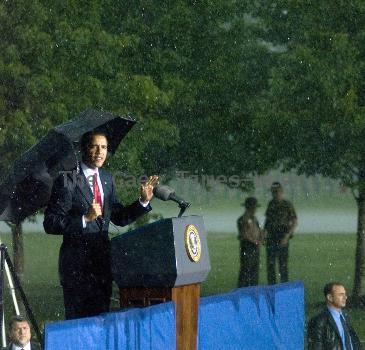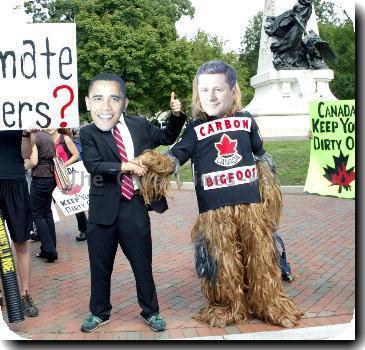Cap collecting more oil from sea floor as slick spreads its reach across Gulf
By Melissa Nelson, APMonday, June 7, 2010
Cap collecting more oil as slick extends its reach
PENSACOLA BEACH, Fla. — The geyser of oil spewing from the sea floor is tapering off day by day, but there’s no quick fix for containing much of the sticky mess spreading across the Gulf of Mexico, defiling wildlife and beaches normally teeming with sunbathers and swimmers.
A cap over the ruptured wellhead is now collecting more than 460,000 gallons of oil a day, Coast Guard Adm. Thad Allen said Monday in Washington. But whether that’s a majority of the leaking oil or not even half is anyone’s guess.
The battle against the oil already in the Gulf now involves “hundreds of thousands” of individual patches, said Allen, the government’s point man for the spill response. Small vessels in the area have been enlisted to help capture those patches using skimmers.
The patchy oil slick from the ruptured pipe off Louisiana has stained beaches and marshes in spots along more than 100 miles of coast from Louisiana to the Florida Panhandle, and a sheen on the surface was spotted as far as about 150 miles west of Tampa, Fla.
The tourist hotspot of Panama City Beach, in the middle of the Panhandle, expected oil to reach its famous beaches within 72 hours, which would mark a new easternmost point for the oil washing ashore.
“We have just entered the area of uncertainty for about half or our beach,” said Dan Rowe, president of the city’s convention and visitors bureau. “We are still hoping tar balls don’t show up here, but we are putting the contingency plans in place and everyone is out there looking at the beach and inspecting it.”
Tar balls continued to roll onto shore Monday morning farther west at Pensacola Beach, leaving a distinct line in the sand from the high-rise condos above as the sun rose. Beach walkers had to stay between the line of dime- and quarter-size tar balls and the retreating surf or risk getting the gummy, rust-staining gunk stuck to their feet.
Jody Haas, a tourist from Aurora, Ill., was among the few walking the beach early Monday after a crowded weekend here. Haas, who had visited the beach before, said it was not the same.
“It was pristine, gorgeous, white sand,” she said. “This spot is light compared to some of the other spots farther down and (the tar) is just everywhere here. It’s just devastating, awful.”
At Barataria Bay, La., just west of the mouth of the Mississippi River, large patches of oil the consistency of pancake batter in the still waters Monday. A dead sea turtle caked in brownish-red oil lay splayed out with dragonflies buzzing by.
The Barataria estuary, which has become one of the hardest-hit areas, was busy with shrimp boats skimming up oil and officials in boats and helicopters patrolling the islands and bays to assess the state of wildlife and the movement of oil.
On remote islands, oil visibly tainted pelicans, gulls, terns and herons.
President Barack Obama sought to reassure Americans on Monday by saying that “we will get through this crisis” but that it would take dedication.
“This will be contained,” Obama said. “It may take some time, and it’s going to take a whole lot of effort. There is going to be damage done to the Gulf Coast, and there is going to be economic damages that we’ve got to make sure BP is responsible for and compensates people for.”
Among those people are Gulf Coast residents who make their living by fishing or operating tourist traps along the region’s white-sand beaches. Allen said Monday that BP needs to make improvements on getting money to individuals and businesses harmed by the spill.
“It’s not a core competency of BP so we’re trying to get them some help,” Allen said.
In Panama City Beach, which just opened a major airport to capture fly-in tourists, officials were fighting to keep their traditional drive-in customers while they still could, Rowe said.
“The folks here are very concerned about the oil out there,” Rowe said. “We are working so diligently to get the word out there to the public that are beaches are clean right now.”
Allen elaborated Monday on comments over the weekend that the spill cleanup would last into fall, acknowledging the full cleanup would take much longer.
“Dealing with the oil spill on the surface will take a couple of months,” he said, but the process of getting oil out of marshlands and other habitats “will be years.”
Officials put out a report late Sunday that dead, oiled birds had been found in Texas but retracted it Monday morning. U.S. Fish and Wildlife Service spokeswoman Nancy Brown blamed the mistake on a clerical error.
BP said Monday that the cost of the response has reached about $1.25 billion. The company said the figure does not include $360 million for a project to build six sand berms meant to protect Louisiana’s wetlands from spreading oil.
It’s not clear how much oil is still escaping from the well. The inverted funnel-like cap is being closely watched for whether it can make a serious dent in the flow of new oil.
BP PLC said Monday in a written statement that the cap is now capturing 466,200 gallons a day. That’s up from about 441,000 gallons on Saturday and about 250,000 on Friday. Federal authorities have estimated the ruptured pipe is leaking between 500,000 gallons and more than 1 million gallons a day.
More oil is being collected as more vents on the cap atop the blown well are closed. The process is gradual because crews need to keep water and gas from creating a slush that thwarted a previous containment effort. The captured oil is being pumped to a ship on the surface.
Contributing to this report were Associated Press writers Tom Raum in Washington, Ray Henry in New Orleans, and Cain Burdeau at Barataria Bay, La.
Tags: Accidents, Barack Obama, Coastlines And Beaches, Environmental Concerns, Florida, Louisiana, North America, Panama City, Pensacola, Pensacola Beach, United States







